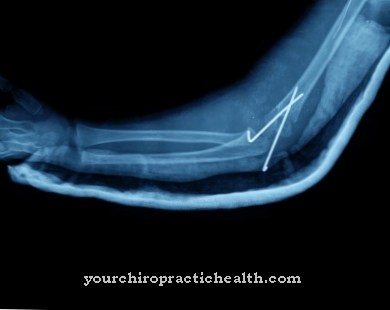With the help of applied kinesiology (from the Greek 'kinesis' for movement) energetic imbalance, disturbances and blockages of the body are found and its emotional, mental and overarching spiritual balance is regained.
The cornerstone of this still relatively new method was established in 1964 with the development of the so-called muscle test by the American chiropractor Dr. George Goodheart and his Applied Kinesiology. In Germany, the term was established in 1982 by the "Institute for Applied Kinesiology" and in 1987 by the "German Society for Applied Kinesiology".
What is Applied Kinesiology?

Applied kinesiology is assigned to alternative medicine and falls under the area of chiropractic and body therapy. At the center of the teaching is the holistic nature of the human body. Individual complaints and findings are not considered in isolation, but always seen in conjunction with mental and emotional influences. According to the movement teachings of applied kinesiology, everything in a healthy body is in constant flux.
The life energy, consisting of breath, lymph, blood, spinal cord and cerebral fluid, should move through the body in a continuous cycle. However, many internal and external factors can throw this energetic flow out of balance. The human being becomes more susceptible to diseases and the body is weakened.In applied kinesiology, it is important to find out which triggers weaken the body and with which individual means the natural flow can be brought back into balance.
Function, effect & goals
Applied kinesiology therapy is based on the underlying assumption that the human body reflects physical and psychological information and states about the functionality of muscles. The muscle represents physical and mental processes and makes them visible on the basis of its condition. The basis of this diagnosis is the kinesiological muscle test: With it, the body is "questioned" about blockages and disorders.
If the therapist touches a diseased area of the body, the associated muscle reacts weakened and thus indicates a problem. If the patient is mentally confronted with an unpleasant topic, the tested muscle also reacts weakly - regardless of whether the topic consciously or unconsciously exerts psychological stress on the patient. At the time of the stress stimulus, the “questioning”, the muscle responds with a deliberately uncontrollable “suspend” or “click”. These two opposing reactions are known as the “body's own feedback loop”.
According to applied kinesiology, "suspending" or giving way of the muscle indicates an energetic disturbance, while staying strong, so-called "remaining locked in", is a sign of health and balance. After the patient has assumed a given posture, the practitioner can test the condition of the muscle by applying pressure to the muscle for a brief moment. The muscle should use its maximum possible force. Any malfunctions or blockages can then be found directly and without the aid of devices. In addition, it can be read off which form of therapy is most suitable for the respective disorder.
Applied Kinesiology works with the “Neurolymphatic Reflex Points” adopted from the original Applied Kinesiology, as well as the “Neurovascular Reflex Points”. It is assumed that these reflex points are located above the respective organs of the body on the front and back of the body. Neurolymphatic reflex points are therefore sensitive or somewhat swollen if there is a disorder, which can be diagnosed by palpating the points.
Applied kinesiology is divided into three different treatment directions. Depending on the training of the treating person, it can be used as an accompanying, coaching or therapeutic kinesiology and support the patient in various areas of life. It is used in its various forms in the field of learning counseling, for self-discovery and self-development, as coaching, for optimizing performance in athletes, for treating anxiety and blockages, in stress management, in psychotherapy and in holistic medicine.
Applied kinesiology is seen as a diagnostic tool that is well suited to locating or preventing individual stress stimuli, malfunctions of the body and other disorders with relatively little effort. In combination with a thorough anamnesis, a physical medical examination and, if necessary, laboratory analyzes, the kinesiological treatment is a good opportunity to treat the patient individually and holistically. The aim of applied kinesiology is always to get the body moving again with regard to stuck thoughts, repetitive behavior patterns, blockages or health problems and to regain its natural balance.
You can find your medication here
➔ Medicines for back painRisks, side effects & dangers
If there is a serious illness such as cancer, kinesiology should by no means be viewed as the sole therapy. However, in cooperation with and in consultation with the attending physician, she can be called in to provide therapy support. Even with severe mental illnesses such as depression or burnout, kinesiology should only be carried out in combination with psychotherapy and, if necessary, medication.
The kinesiological muscle test is only suitable to a limited extent if there is a disease of the muscular system, as the diagnosis is not clear due to the already weakened muscles. Paralyzed people and children under five years of age are also unsuitable for the muscle test. In this case, many experts recommend the so-called surrogate test. Another person - for example the mother of the child - acts as a "translator" between the therapist and the patient.













.jpg)

.jpg)
.jpg)











.jpg)